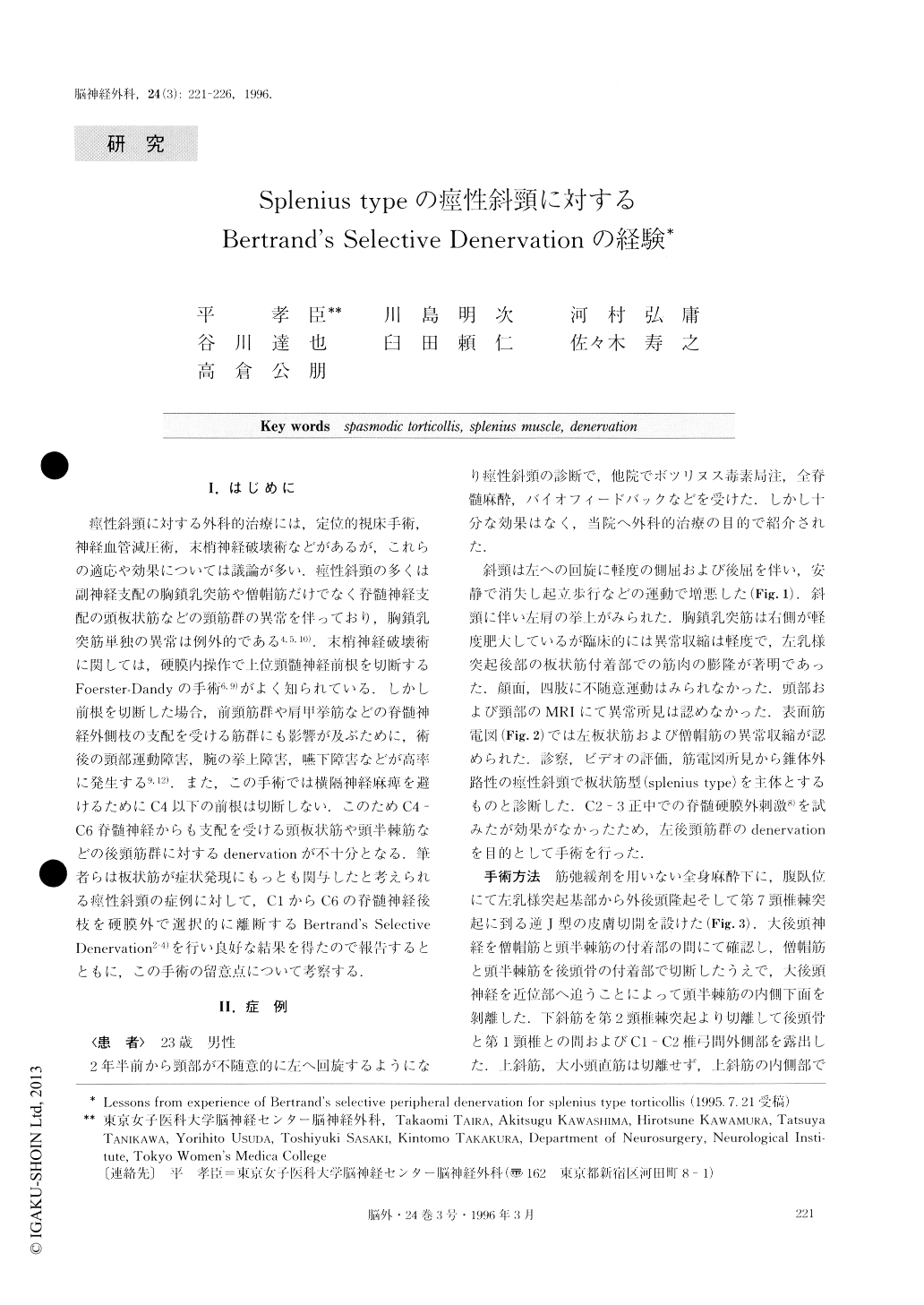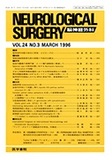Japanese
English
- 有料閲覧
- Abstract 文献概要
- 1ページ目 Look Inside
I.はじめに
痙性斜頸に対する外科的治療には,定位的視床手術,神経血管減圧術,末梢神経破壊術などがあるが,これらの適応や効果については議論が多い.痙性斜頸の多くは副神経支配の胸鎖乳突筋や僧帽筋だけでなく脊髄神経支配の頭板状筋などの頸筋群の異常を伴っており,胸鎖乳突筋単独の異常は例外的である4,5,10).末梢神経破壊術に関しては,硬膜内操作で上位頸髄神経前根を切断するFoerster-Dandyの手術6,9)がよく知られている.しかし前根を切断した場合,前頸筋群や肩甲挙筋などの脊髄神経外側枝の支配を受ける筋群にも影響が及ぶために,術後の頸部運動障害,腕の挙上障害,嚥下障害などが高率に発生する9,12).また,この手術では横隔神経麻痺を避けるためにC4以下の前根は切断しない.このためC4—C6脊髄神経からも支配を受ける頭板状筋や頭半棘筋などの後頸筋群に対するdenervationが不十分となる.筆者らは板状筋が症状発現にもっとも関与したと考えられる痙性斜頸の症例に対して,C1からC6の脊髄神経後枝を硬膜外で選択的に離断するBertrand's SelectiveDenervation2-4)を行い良好な結果を得たので報告するとともに,この手術の留意点について考察する.
A 23-year-old male with splenius type torticollis underwent selective denervation of C1 and C2 roots and C3-C6 spinal posterior rami, with excellent results. Based on this experience, we stress the importance of dynamic EMG and thorough review of video recording for identifying the involved neck muscles. In the opera-tive procedures, the nerve rami are identified under the semispinalis muscle. To dissect the correct plane under the semispinalis muscle, the key point to keep in mind is to follow the great occipital nerve to the proximal part. An ultrasonic blood flow meter is useful to locate the vertebral artery in the spaces between the occiput and the C1 lamina and between C1-C2 laminae. Be-cause fine nerve branches run in the soft tissues over the laminae, to avoid transient neuroapraxia, dissection around the C1, C2 arches should not be carried out under the periosteum, as is usually done in case of laminectomy. Dissection of C1 and C2 rami as far as the very medial part is rather difficult because of bleed-ing from the venous plexus and the presence of the ver-tebral artery. Therefore, the intradural approach might be easier for sectioning the C1 and C2 roots. We would like to add these points to the original description by Bertrand.

Copyright © 1996, Igaku-Shoin Ltd. All rights reserved.


